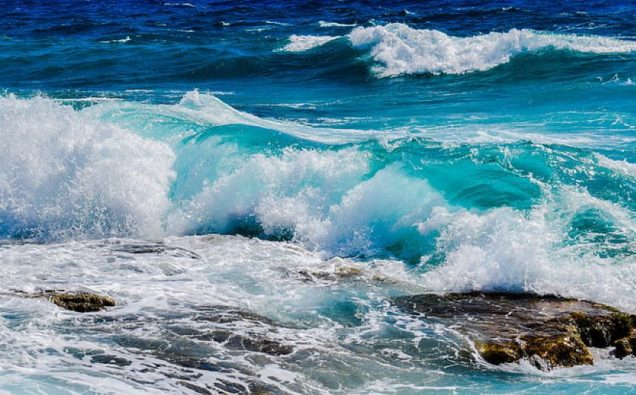
“Water’s Paradox: The Dance of Fire and Ice,” inspired by the original poem The Water of Life” by Ali Imran, explores water’s dual nature and its delicate balance between opposing forces. The title itself, “Water’s Paradox: The Dance of Fire and Ice,” suggests the coexistence of opposites within water, emphasizing the delicate relationship between contrasting elements—fire, ice, and water itself. This paradoxical dance reflects the larger themes of balance, transformation, and life.
Structure and Form:
The poem is composed in free verse, a form that mirrors the fluidity of water itself. There is no fixed meter or rhyme scheme, which allows the content to unfold in a natural, unrestricted manner, like the movement of water. This structural choice supports the thematic focus on the adaptable and changing nature of water, as it is a force that exists in various states, from liquid to ice to vapor, and interacts with other forces (fire, light, darkness).
Thematic Exploration:
The poem’s exploration of water touches on themes of life, transformation, and the balance between opposing forces. Through the lens of water, the poet presents a reflection on nature’s contradictions and the tension between creation and destruction.
Water as a Mediating Force: The opening lines suggest a primordial moment in which fire and water came into existence, with fire coming first but ice arriving later. However, the poem moves quickly into a meditation on water’s dual nature. Water is described as being both “Icy and Fiery,” encapsulating two opposing qualities within one element. This paradox is central to the poem, as it reveals that water is not merely a passive element but an active participant in the dance of creation and destruction. The imagery of fire burning itself out and ice melting away highlights how water both preserves and dissolves, indicating that, like all elements, it has an inherent tension between opposing forces.
Water as Life-Sustaining: Water is framed as essential to life, an element that “becomes life-sustaining” when in adequate supply. In this sense, the poem underscores water’s vital role in the balance of the natural world. The metaphor of water “running like a canal” reinforces the idea of water as a conduit, flowing continuously between the extremes of fire and ice, maintaining the equilibrium necessary for life to thrive.
Light, Reflection, and Illusion: The reflective surface of water serves as a metaphor for perception and reality. Water is described as “a medium of the light,” which suggests its role in refracting and reflecting the world around it. Yet, the poem acknowledges the “dark recesses” of water, suggesting that water is not just a clear, visible surface but also a mysterious, hidden depth. The idea of light being processed by water adds complexity to the notion of water as a transformative force—what appears on the surface may not be the full truth, and deeper layers may exist beneath. The suggestion that this could all be an “illusion” invites the reader to question the nature of perception and reality itself.
The Quest for Balance: The final lines present a philosophical and existential question about the possibility of achieving balance between the opposing forces of fire and ice. “Could we ever keep enough water / To achieve the elusive balance / Between fire and ice?” This raises the question of whether humans can ever reconcile the extremes of nature—heat and cold, creation and destruction—through water. Water, as a metaphor, stands as a symbol of balance itself, yet it is fragile, dependent on the careful management of natural resources to avoid imbalance. The reference to an “elusive balance” suggests that this harmony may be difficult, if not impossible, to achieve, and that the forces of fire and ice are in constant tension, reflecting the fragility of life and nature.
Symbolism:
Water, in this poem, is a multifaceted symbol. It represents life and sustenance, but also transformation and paradox. The dualities of “Icy and Fiery” symbolize the tension between opposites, while water’s capacity to reflect light and contain darkness highlights its role as both a mirror and a container of deeper truths. The imagery of the canal running between fire and ice symbolizes water’s position as both a connector and a boundary, able to mediate between forces that might otherwise be at odds.
Conclusion:
“Water’s Paradox: The Dance of Fire and Ice” is a profound exploration of the complexities of nature and existence, using water as a central metaphor for life’s contradictions and balance. Through the themes of transformation, reflection, and equilibrium, the poem invites readers to consider the delicate interplay of opposing forces—both in the natural world and in human experience. Water is not merely a passive element but an active force that sustains life while navigating the tension between creation and destruction. The poet’s questioning of whether this balance can be maintained reflects a larger philosophical inquiry into the sustainability of life and the fragile balance between forces beyond human control. Ultimately, the poem challenges us to reflect on the elusive nature of harmony in the world around us.
Here is Ali Imran’s poem:
The Water of Life
If fire broke out
With the momentous moment
Of genesis billions of years ago
Ice would have arrived
A lot later on earth.
But when did air and water originate?
Seems earlier than everything
For water can be both
Icy and Fiery.
Fire burns but also burns itself out
Ice preserves but also melts away.
When in enough supply
Water like air becomes
Life-sustaining.
Running like a canal
With fire and ice as the two banks.
In its reflection
Water appears to become
A medium of the light
In its impact
Water appears to process
The light
Though it has its dark recesses too.
If all that is not an illusion
Could we ever keep enough water
To achieve the elusive balance
Between fire and ice!











